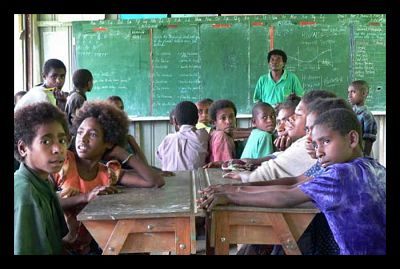Education in Guinea Lacking

While the West African nation of Guinea combats the Ebola crisis, a host of problems threatening the nation’s welfare are being widely overlooked, including education in Guinea.
Since its independence from France in 1958, Guinea has seen high levels of political unrest, severe human rights abuses and dangerously high poverty rates. In the past five years, records indicate that 40.9 percent of Guineans are living on less than $1.25 a day, GDP per capita is $523 and the nation had one of the top 10 highest child marriage rates in the world.
Yet Guinea’s educational statistics are perhaps the greatest cause for concern. According to the World Bank, Guinea’s 2010 literacy rate stood at 25 percent for adults, 21.8 percent for young women aged 15-24 and 37.6 percent for young men of the same age group. The database defined literacy as “the percent of adults who can both read and write with understanding a short simple statement on their everyday life.”
While the World Bank does not provide literacy data for every country, Guinea’s literacy rates were the lowest of all countries recorded in 2010, the last year data was made available for Guinea.
Although the Guinean government provides free and compulsory education to students between the ages of seven and 13, many students are not taking advantage of these services.
Primary school completion rates stood at 55.1 percent and 67.8 percent for females and males respectively in 2012. Gender gaps continue to persist in the higher grades, with 32 percent of females and 41 percent of males progressing to secondary school (high school). Within the university system, males outnumber females by an almost 10:4 ratio.
As for the future, with the majority of the government’s resources being prioritized to fight Ebola, it is unclear if and when more funding will be channeled toward education.
– Katrina Beedy
Sources: BBC News, WHO, World Bank G Static
Photo: Island Vulnerability
